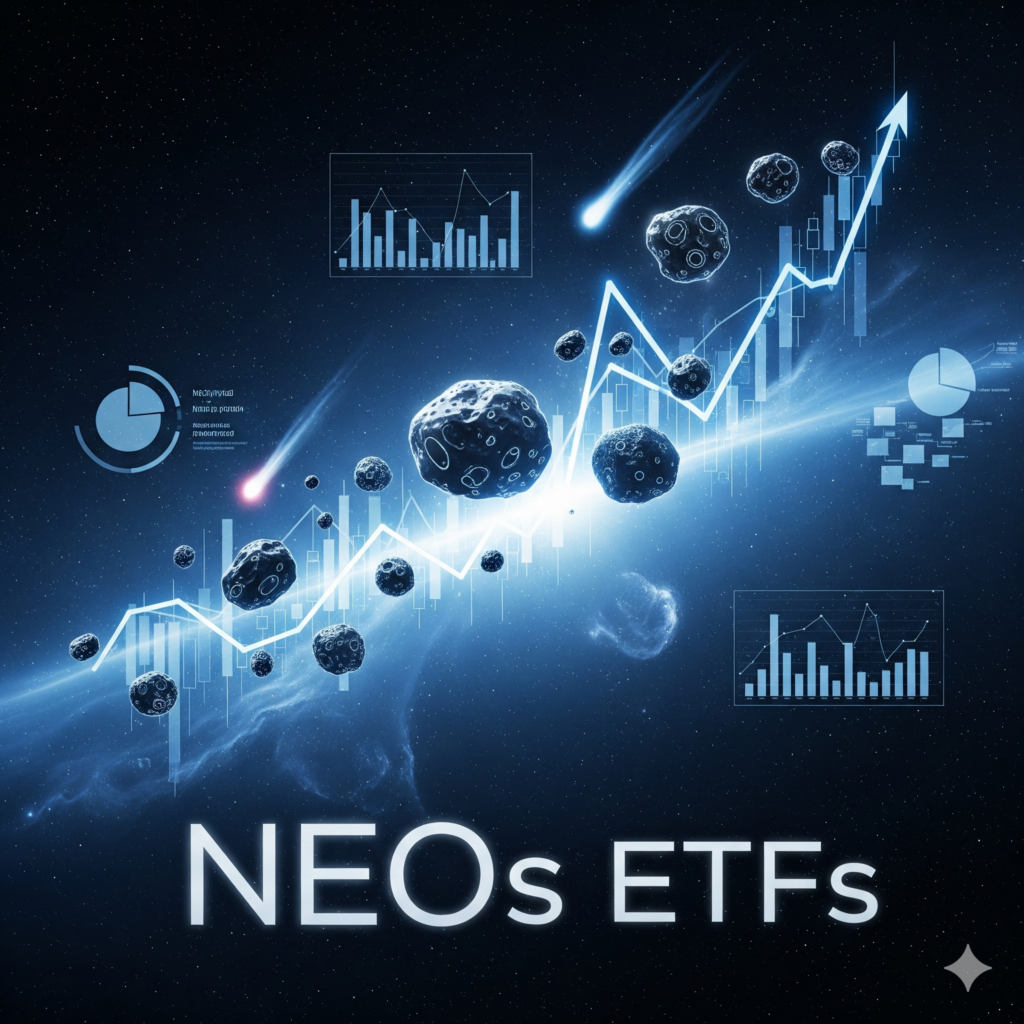Introduction: The Rise of Income-Focused Option ETFs
In a yield-starved market, income-seeking investors have gravitated toward option-based ETFs—funds that combine underlying exposures (equities, crypto, etc.) with derivative overlays (often writing or selling covered call options) to deliver monthly or regular distributions. NEOs ETF (NEOS Investments’ suite) , YieldMax ETFs are two competing high yield etfs in this evolving corner of the income ETF landscape.
While the income potential is alluring, the mechanics, risk tradeoffs, and tax consequences differ significantly. In this article, we:
Compare NEOs ETF strategies with YieldMax ETFs,
Break down three flagship NEOs ETFs (SPYI, QQQI, BTCI),
Examine their performance, yield, risk, and ideal use cases
NEOs ETF vs YieldMax ETFs: Strategic Differences
What Are YieldMax ETFs?
YieldMax ETFs are built around synthetic or derivative-based exposures to high-volatility assets (e.g., Tesla, MicroStrategy, Coinbase) and generate income by systematically writing call options. As InvestmentU notes, “YieldMax ETFs do not own the underlying stocks directly. Instead, they use derivatives to simulate long exposure … then generate income by systematically selling call options.” Investment U
These funds often tout extremely high yields—but these come with elevated risk of NAV erosion, especially when the underlying asset price shifts adversely. *InvestmentU’s “YieldMax ETFs and Alternatives” article illustrates how spectacular returns come at the cost of concentration and volatility. Investment U
What Are NEOs ETFs?
In contrast, the NEOs ETF family from NEOS Investments tends to pair broader benchmarks or crypto exposures (like S&P 500, Nasdaq-100, Bitcoin) with option strategies to harvest premium and provide monthly income. Because of the broader base, the volatility and idiosyncratic concentration risk can be lower (relative to single-stock exposures) — though the derivative overlay still adds complexity.
Head-to-Head: YieldMax vs NEOs ETF
Feature
NEOs ETF
YieldMax ETFs
Underlying exposure
Broad indices (S&P 500, Nasdaq-100), Bitcoin, etc.
Narrower, often single stocks or crypto proxies
Income generation method
Option overlays + equity/crypto exposure
Derivative (synthetic) exposure + aggressive option writing
Yield potential
High, but tempered by diversification
Extremely high yields often (but higher risk of capital return)
Risk profile
Volatility, derivative risk, capped upside
Very high volatility, NAV erosion risk, concentration risk
Tax / distribution classification
Many distributions as Return of Capital (ROC) reducing cost basis
Similar ROC / capital erosion issues
Historical track record
Moderately established for some (e.g. SPYI)
Newer, less predictable in extreme market shifts
One warning often flagged by industry voices (and echoed in ETF commentary) is that yields vastly exceeding what the underlying markets can typically support may be unsustainable — in effect, the fund could be returning capital just to meet distribution promises.
Although both strategies offer income, yield-chasing without attention to risk and sustainability can backfire.
SPYI: NEOs S&P 500 High Income ETF
What Is SPYI?
SPYI is NEOS’s flagship “high income” ETF built on the S&P 500 index + an option overlay (mostly covered calls) to generate monthly income.
Performance & Yield
Since its launch (August 2022), SPYI’s NAV-based annualized return has hovered around ~14.08% (as of August 2025).
Market price returns are similar, indicating modest premium/discount inversion effects.
Its distribution yield is attractive compared to traditional equity income funds, though a large share of distributions may be classified as Return of Capital (ROC), which erodes cost basis.
Strengths & Risks
Strengths: Broad U.S. equity exposure with income overlay; less concentration risk than niche or single-stock income strategies; established enough to show some track record.
Risks: 1. Capped upside in strong bull markets (option writing sacrifices some gains). 2. ROC-heavy distributions complicate tax planning and reduce cost basis over time. 3. In severe drawdowns, option premiums may not offer full protection. 4. Liquidity and bid-ask spreads may add execution risk.
Read Next: 5 Monthly Dividend ETFs for Income Portfolios
QQQI: NEOs Nasdaq-100 High Income ETF
What Is QQQI?
QQQI offers exposure to the Nasdaq-100 index plus option overlays, targeting higher yield and income by leveraging the tech/growth tilt of Nasdaq.
Performance & Yield
Launched more recently (January 2024), its shorter track record shows stronger nominal returns versus SPYI in many comparison periods.
For instance, in mid-2025, QQQI’s YTD performance outpaced SPYI in many metrics, though at the cost of higher volatility and drawdowns.
Volatility metrics show QQQI typically has higher standard deviation and deeper maximum drawdowns than SPYI (e.g. ~−20% vs ~−16%) in observed periods.
Strengths & Risks
Strengths: Higher income potential (due to volatility of underlying); more upside capture in certain tech rallies (despite option drag).
Risks: More concentrated sector risk (tech-heavy exposure); option overlay may clip aggressive upside gains; newer history means less stress-tested; same ROC / tax issues as SPYI.
BTCI: NEOs Bitcoin High Income ETF
What Is BTCI?
BTCI is NEOS’s venture into crypto: it provides exposure to Bitcoin (via ETPs / crypto proxies) and overlays option strategies on that exposure to generate monthly income.
Performance & Yield
Launched in October 2024.
As of August 2025: - Its distribution rate (based on the most recent payout) has approached ~28%. - Cumulative returns since inception have been robust (≈ +49.5% in NAV terms in that span). - Its market price has generally traded near NAV, with small premiums/discounts (~0.10%).
However, a large portion of distributions are estimated to be Return of Capital (ROC ~ 95%), significantly affecting tax basis.
Strengths & Risks
Strengths: Exposure to crypto upside combined with income overlay, which few other products directly offer.
Risks: 1. Bitcoin’s inherent volatility is dramatic—option overlay may buffer but won’t eliminate large swings. 2. Option overlay on crypto is more complex (less mature derivatives markets, liquidity, correlation mismatches). 3. ROC heavy distributions erode basis, complicating tax and long-term return. 4. Limited historical track record, especially through crypto downturns.
How to Think About Fit: Use Cases & Allocation Strategy
Diversification & Correlation
SPYI and QQQI tend to move together (high correlation), so using both adds limited hedging benefit.
BTCI can offer diversification from equities, but at the cost of substantially higher volatility.
Yield vs Growth Tradeoff
For income-focused investors, all three are appealing income vehicles—but the income comes with trade-offs: capped upside, ROC erosion, and higher risk.
In strong bull markets, traditional equity ETFs may outperform due to less drag from option overlays.
Tactical Use Cases
Income sleeve: In a total-return core portfolio, NEOs ETFs may fill the “income generating” slot rather than the core equity slot.
Range-bound / sideways markets: Option-laden strategies tend to shine when underlying assets are neither raging upwards nor crashing.
Tax-efficient allocations: Given heavy ROC distributions, NEOs ETFs may be better held in tax-deferred accounts (e.g. IRAs) rather than taxable accounts.
YieldMax vs NEOs: When One May Edge Out the Other
If you’re comfortable taking concentrated bets and want maximum yield, YieldMax might be alluring—but the risk of capital erosion is real
For investors who prefer somewhat broader exposure with less single-stock risk, NEOs ETFs offer a more balanced exposure to option-based income.
Conclusion
NEOs ETF and YieldMax ETFs represent two flavor variants of the growing options income ETF space. The NEOs suite (SPYI, QQQI, BTCI, etc) tends to favor broader benchmarks over single-stock concentration, which may offer a more tempered risk profile while still delivering high distribution yields. YieldMax ETFs, by contrast, aggressively lean into yield via concentrated exposures and option overlays—but they also carry a greater danger of capital erosion and volatility risk.
If I were advising you, I’d treat SPYI, QQQI, and BTCI as tools within the “income / alternative” sleeve of a diversified portfolio, not as replacements for core equity or fixed-income holdings. And I’d lean toward holding them in tax-advantaged accounts to minimize the drag from ROC distributions.
Hey there! I’m Russ Amy, here at IU I dive into all things money, tech, and occasionally, music, or other interests and how they relate to investments. Way back in 2008, I started exploring the world of investing when the financial scene was pretty rocky. It was a tough time to start, but it taught me loads about how to be smart with money and investments.
I’m into stocks, options, and the exciting world of cryptocurrencies. Plus, I can’t get enough of the latest tech gadgets and trends. I believe that staying updated with technology is key for anyone interested in making wise investment choices today.
Technology is changing our world by the minute, from blockchain revolutionizing how money moves around to artificial intelligence reshaping jobs. I think it’s crucial to keep up with these changes, or risk being left behind.



























